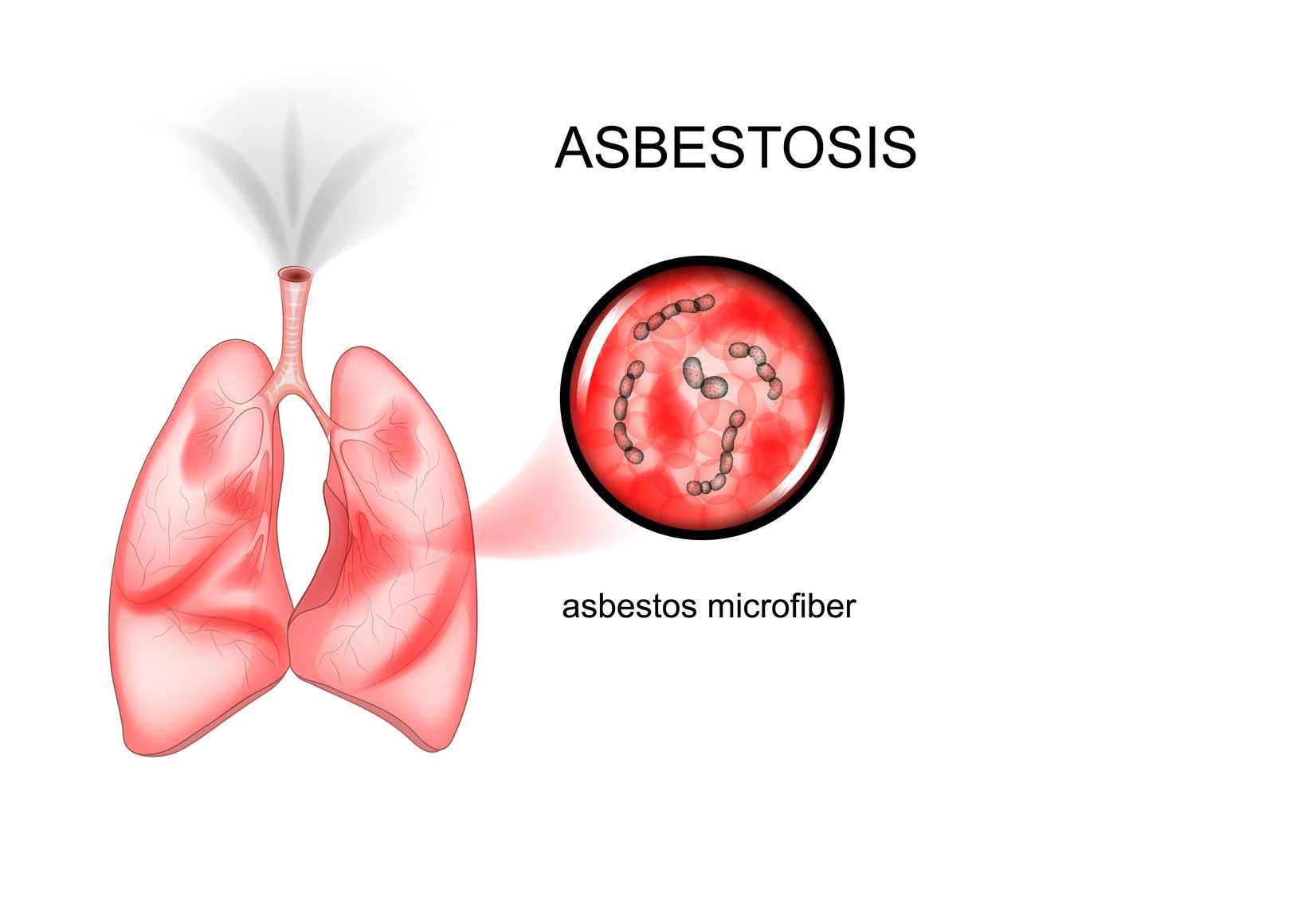 Understand what asbestosis is, what causes it, and how your doctor may be liable for malpractice if he or she did not correctly diagnose it.
Understand what asbestosis is, what causes it, and how your doctor may be liable for malpractice if he or she did not correctly diagnose it.
Asbestosis is a lung disease caused by inhaling asbestos fibers. Asbestos is a mineral that was once common in the construction of houses, apartments, and office buildings. It was a feature of insulation and of floor and ceiling tiles. Before its dangers were well-known, workers, particularly in the building and construction trades, frequently came into contact with asbestos on the job. Many of these workers later developed asbestosis and other lung conditions.
Asbestosis is dangerous because it can lead to pulmonary fibrosis (the scarring of lung tissue) and mesothelioma (a deadly lung cancer associated with asbestos exposure). It relates to medical malpractice in that your doctor has a professional duty to make an accurate and timely diagnosis when you present symptoms of asbestosis. An erroneous or delayed diagnosis can cause you to experience complications you otherwise could have avoided.
The Symptoms of Asbestosis
If you visited your doctor complaining of certain symptoms, your doctor should have recognized asbestosis as a possibility, especially if you worked in the construction trade before modern regulations limited workers’ exposure to the substance. A diligent doctor would know this information, as he or she would have taken your complete history and carefully reviewed it.
Here are the most common symptoms of asbestosis:
- Shortness of breath
- Persistent, dry cough
- Loss of appetite
- Weight loss
- Widening of the fingertips or toes (“clubbing”)
- Chest tightness or pain
If you presented one or more of these symptoms to your doctor, and he or she did not test for asbestosis despite your history of coming into contact with asbestos, this failure may constitute negligence.
Risk Factors for Developing Asbestosis
Even before you described your symptoms to your doctor, he or she should have asked about your medical and work history. This information can provide insight into the origins of a patient’s maladies.
In the case of asbestosis, the risk factors involve occupations. If your work history includes any of the following roles, your doctor should have been vigilant about screening for asbestosis:
- Asbestos mining
- Asbestos removal
- Aircraft and auto mechanic
- Boiler operation
- Construction work
- Electrical work
- Railroad work
- Shipyard work
If your doctor knew you worked in any of these positions and did not think to screen for asbestosis, or if he or she never bothered to ask about your work history when evaluating you, then his or her actions may have been negligent, giving you grounds to file a medical malpractice lawsuit.
For Help with a Medical Malpractice Case for Asbestosis, Call Newsome | Melton at 888-261-5614
The Newsome | Melton medical malpractice team can help you seek damages from your doctor for his or her failure to diagnose asbestosis. We offer a free consultation and work on a no-win-no-fee basis. To speak with a member of our staff today, call us at 888-261-5614.
Asbestosis - Frequently Asked Questions

What is a Cephalohematoma? A cephalohematoma is a common birth injury associated with labor in which forceps or vacuum extraction is necessary. This condition can also occur if the baby’s head happens to bang against the mother’s pelvic bone during labor. A cephalohematoma is a lesion on the newborn’s scalp due to an accumulation of
Read More
If you suspect medical malpractice caused you harm, you may be considering taking legal action. In these instances, many victims of medical negligence wonder: Do medical malpractice cases settle or do they go to trial? Not all medical malpractice claims lead to litigation. Those that do involve a lawsuit do not always make it to a
Read MoreAsbestosis - News Articles

James DeGeorge woke up on a cold December morning in 2014 with severe pain coming from his chest. DeGeorge was rushed into the Mercy Fitzgerald Hospital located in Darby, Pennsylvanian, which is about seven miles west of Philadelphia. He was 84 at the time and his doctors decided that a pacemaker would help regulate his
Read More
After completing a 5k race in October 2012, Sandra Williams experienced an intense pain in her neck. Barely able to move her head, Williams, then 55, consulted doctors at St. Francis Hospital in Columbus, Georgia. She quickly agreed to undergo a neck operation scheduled just four days after the race. The surgery was deemed a
Read More